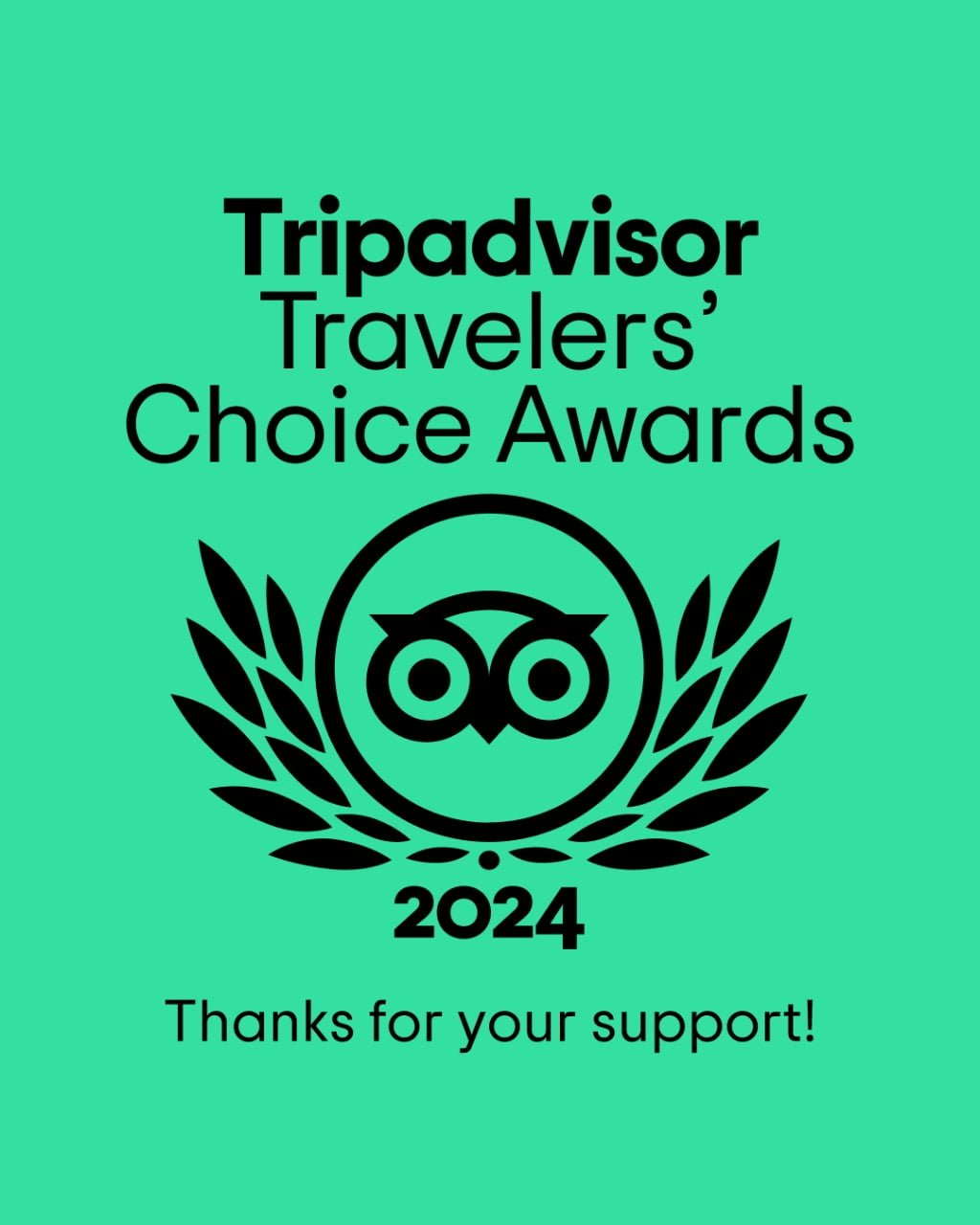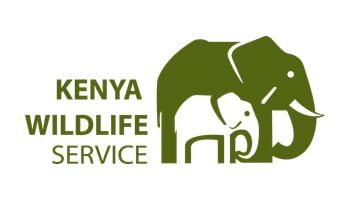Feel Africa’s wild heart beat! Go beyond the ordinary. Discover your unparalleled The Kenya Safari adventure – where legends like the Great Migration come alive. Your extraordinary journey starts now.
A Kenya safari offers an unparalleled journey into the heart of Africa’s wild beauty. From the pristine white beaches bordering the Indian Ocean to the cool, misty western highlands, and from the vast, dry savannahs of the south to the unique semi-desert landscapes around Lake Turkana, Kenya’s incredible diversity ensures a truly exceptional experience for every traveler. This rich variety allows for numerous unique the Kenya Safari options, promising unforgettable moments.
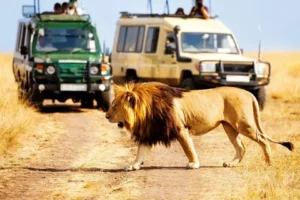
The Majestic Masai Mara National Reserve: Crown Jewel of Your Kenya Safari
At the core of any quintessential the Kenya Safari experience lies the legendary Masai Mara National Reserve. This iconic destination forms a vital part of the expansive Serengeti-Mara ecosystem and boasts the planet’s highest concentration of large wildlife. Witnessing the annual Great Migration of over two million wildebeest, accompanied by countless zebras and gazelles, is a highlight of a Kenya safari. These magnificent herds traverse the plains of the Serengeti and Mara throughout the year, driven by the seasonal rains. The dramatic Mara River crossings, a spectacle often hailed as the “greatest show on earth,” typically unfold in both Kenya and Tanzania from July to October.
High-Altitude Adventures: A Comfortable & Low-Risk the Kenya Safari
For travelers planning a Kenya safari, an important consideration is that many prime safari destinations are situated at high altitudes, often around 2000m (6,500ft) above sea level. This unique geographical feature provides two distinct advantages compared to other safari regions:
1. Pleasant Temperatures: It generally doesn’t get as intensely hot as in some other areas. In fact, evenings can be delightfully cool, making for comfortable game drives and restful nights.
2. Low Malaria Risk: These elevated regions naturally have a significantly lower risk of malaria, making them an excellent choice for families, especially those traveling with young children, seeking a safe and enjoyable the Kenya Safari.
Kenya’s Commitment to Wildlife: A Legacy of Conservation
A truly remarkable aspect of a the Kenya Safari is the country’s profound commitment to wildlife conservation. For over 40 years, Kenya has maintained a strict ban on trophy hunting. This long-standing policy has fostered an environment where wildlife exhibits a remarkable trust in vehicles, allowing for closer and more relaxed encounters in many areas. Furthermore, this ban has helped retain superior genetics within the animal populations, meaning you can often witness magnificent specimens with impressive tusk and horn sizes that might have otherwise been lost to hunting.
While we advocate for respectful wildlife viewing, allowing majestic animals to remain undisturbed in their natural habitats creates a fantastic experience, often not possible elsewhere.
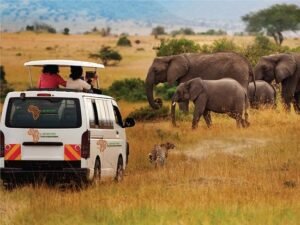
The Conservancy Model: A Sustainable Future for the Kenya Safari
Kenya proudly showcases another significant conservation success: the Conservancy model. This innovative approach involves a collaborative effort between private companies and local community landowners dedicated to conservation. While various models exist, the core principle is that local communities allocate land for conservation and eco-tourism. In return, they receive vital revenue, employment opportunities, and even grazing benefits for their livestock.
While you might occasionally observe wildlife and cattle sharing space in these areas, this is a small and worthwhile trade-off. Without these conservancy arrangements, the wildlife in these regions might not exist at all, putting immense pressure on national parks. This method also simultaneously allows traditional pastoralist cultures to thrive alongside conservation efforts, enriching your the Kenya Safari experience. To learn more about ethical and sustainable travel, visit us at https://bestcampingkenya.com/.
Your Journey Through Kenya: Diverse Safari Regions Await
We’ve categorized Kenya into six distinct safari regions, each offering unique landscapes and wildlife:
• Masai Mara & Private Conservancies: The ultimate big cat territory.
• Laikipia: Diverse wildlife and stunning scenery, often with unique community-based conservation.
• Amboseli & Tsavo: Home to vast elephant herds and iconic views of Mount Kilimanjaro.
• Northern Kenya: Untamed wilderness and unique species.
• The Kenyan Coast: Perfect for combining safari with a relaxing beach holiday.
• Nairobi: The vibrant capital city, often a starting point for your the Kenya Safari.
Most Kenya safaris involve flying between these incredible locations via scheduled flights departing from Nairobi. A classic Kenya safari itinerary often includes visits to three distinct locations, with the Masai Mara being a must-visit, especially for first-time adventurers. Kenya’s rich history as a safari destination, immortalized by renowned writers, movies, and TV shows, is complemented by its warm hospitality, numerous family-owned safari operators, and consistently excellent service.
When to Embark on Your Kenya Safari: Seasons & Experiences
As Kenya sits on the equator, there can be subtle weather variations. Furthermore, some the Kenya Safari locations are at high elevations (up to 2000m), leading to mild to chilly temperatures year-round in these areas. In regions like Laikipia, it’s common to find a lit fireplace in your room regardless of the season. Visitors are often surprised by the cool temperatures, and warm clothing is highly recommended for early morning game drives.
Kenya, much like Tanzania, experiences four main seasons, making it an ideal year-round destination. However, the timing of your visit significantly impacts your the Kenya Safari experience, so choose the season that aligns with your desired adventure.
The ‘Long Rainy Season’ (March, April & May):
This period brings the majority of Kenya’s rainfall, typically in heavy afternoon downpours. While roads can be challenging and animals may disperse from water sources, a the Kenya Safari during this time can be an incredibly rewarding and authentic experience. Embrace the possibility of mud and rain – it’s all part of the adventure! On the bright side, this is when many baby animals are born, the skies are beautifully dramatic, and the landscape bursts with new life. It’s also the quietest time to travel, offering a more exclusive experience and often fantastic deals.
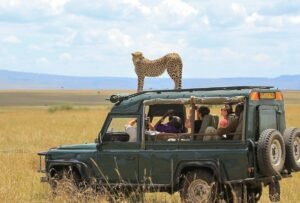
The ‘Short Rainy Season’ (November & December):
These rains are less intense and more unpredictable than the long rains, varying considerably year to year. A Kenya safari during this period can be very enjoyable, provided you’re prepared for the chance of a little rain.
The ‘Long Dry Season’ (June to October):
This is Kenya’s peak tourism season, characterized by clear, sunny days and minimal rainfall. Remember that temperatures still vary by location and altitude; high-altitude areas like the Masai Mara and Laikipia can be quite cold, especially on early morning game drives. This is widely considered the best time for a the Kenya Safari, as animals congregate around diminishing water sources, making sightings more predictable. Between August and September, the annual wildebeest migration begins its dramatic Mara River crossings, a truly iconic bucket-list event.
The ‘Short Dry Season’ (January & February):
This dry interlude between the short and long rainy seasons is an excellent time to travel. Many areas remain green from the short rains, offering clear, crisp views and vibrant colors for photography enthusiasts. Birdwatching is also at its peak as migratory birds have arrived.
Kenya Safari Insider Tip: Maximize Your Wildlife Encounters
For an unparalleled the Kenya Safari experience, consider staying in the private conservancies bordering the Masai Mara National Reserve. These areas offer a more exclusive feel, away from the main reserve’s crowds, and your stay directly contributes to the vital conservation of these precious habitats. Many lodges within the conservancies also offer day trips into the main Reserve, allowing you to witness the spectacular migration river crossings if that’s on your bucket list. A key advantage of conservancies is the flexibility they offer: it’s often possible to drive off-road, conduct thrilling night drives, and embark on walking safaris, adding unforgettable dimensions to your Kenya safari adventure.
Frequently Asked Questions About Your Kenya Safari
Planning a Kenya safari often comes with questions. Here are answers to some of the most common ones to help you prepare for your incredible adventure:
❓ How long should my Kenya safari be?
A typical the Kenya Safari often ranges from 5 to 10 days, allowing you to visit 2-3 key regions like the Masai Mara, Amboseli, or Laikipia. The ideal duration depends on your interests and budget, with longer trips offering more in-depth exploration.
❓ What is the best time of year for a Kenya safari?
While Kenya is a year-round destination, the ‘long dry season’ (June to October) is generally considered best for wildlife viewing, especially for the Great Migration. The ‘short dry season’ (January & February) also offers excellent viewing. The rainy seasons (March-May and Nov-Dec) can offer unique experiences like lush landscapes and baby animals, often with fewer crowds and better deals.
❓ Is Kenya safari safe?
Yes, a Kenya safari is generally very safe. Reputable tour operators prioritize your safety with experienced guides, well-maintained vehicles, and secure accommodations. The country has a strong focus on tourism safety, especially within national parks and conservancies.
❓ What kind of animals can I expect to see?
On a Kenya safari, you have an excellent chance of spotting the “Big Five” (lion, leopard, elephant, rhino, buffalo), along with giraffes, zebras, wildebeest, cheetahs, hippos, crocodiles, and an incredible array of birdlife. The Masai Mara is particularly famous for its high concentration of predators.
❓ What should I pack for a Kenya safari?
Pack light, comfortable clothing in neutral colors (khaki, green, brown) to blend in with the environment. Include layers for varying temperatures, as early mornings and evenings can be chilly, especially at high altitudes. Don’t forget a wide-brimmed hat, sunglasses, sunscreen, insect repellent, and a good camera with extra batteries!
❓ What is the difference between a National Reserve and a Conservancy?
National Reserves are government-managed areas with stricter rules (e.g., no off-roading, fixed game drive times). Conservancies are privately owned or community-owned lands adjacent to reserves, often offering more exclusive experiences like off-road driving, night drives, and walking safaris, with your stay directly contributing to local communities and conservation.
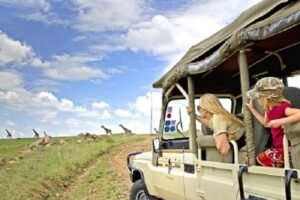
Conclusion: Your Unforgettable Kenya Safari Awaits
A Kenya safari is more than just a trip; it’s a profound journey into the heart of wild Africa. From the dramatic river crossings of the Great Migration in the iconic Masai Mara to the unique high-altitude landscapes offering comfortable climates and low malaria risk, Kenya delivers an unparalleled wildlife experience. Coupled with its strong commitment to conservation through innovative models and warm hospitality, a the Kenya Safari offers something truly special for every traveler.
Don’t just dream of seeing the Big Five or experiencing the vast savannahs. Make it a reality. Your extraordinary the Kenya Safari adventure, filled with stunning encounters and cherished memories, is waiting.
Ready to plan your dream African journey? Visit us at https://bestcampingkenya.com/ today to begin crafting your personalized the Kenya Safari experience.

